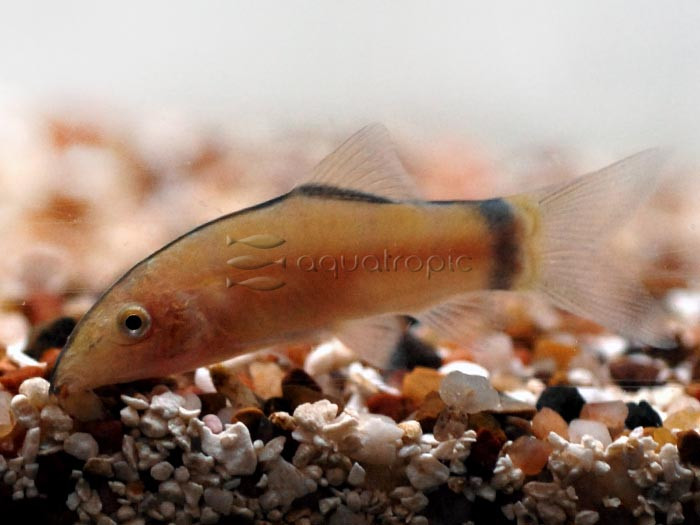Skunk Loach (Yasuhikotakia morleti)

In the annals of fish nomenclature, few names are quite so challenging to spell and fun to pronounce as that of the loach genus Yasuhikotakia. This group was established relatively recently, in 2002, for a small number of species which had formerly been included in Botia. The name honors a researcher on these fishes, Dr. Yasuhiko Taki, and can be pronounced thusly: yaz-ooh-he-koh-tahk-ee-uh. Say it with me a few times… rolls off the tongue beautifully, no?
The genus has seven recognized species at the moment, of which only a few can be regularly found in the aquarium trade. The Skunk Loach (Y. morleti) is unique among these for its namesake black dorsal stripe, and, in a certain sense, this can be thought of as the Southeast Asian equivalent of the Amazon’s Skunk Cory Catfish (Corydoras arcuatus). Aside from their similar looks, both are small bottomdwellers that scavenge for edible morsels using highly sensitive barbels around their mouths. No doubt, there’s some advantage to having a black stripe if you live on the bottom hunting for invertebrates, but precisely what this is we cannot say.
You’ll find the Skunk Loach in a variety of aquatic habitats throughout the major river drainages of Cambodia, Thailand, Laos and Vietnam. The species is reported to migrate throughout the year as the monsoons fill these waterways, moving from the larger river channels into shallower floodplains.
The botiid loaches are highly social creatures and will regularly interact with one another in captivity, jostling among themselves with complex behavioral rituals to maintain their inscrutable hierarchies. For this reason, it is always recommended that these fishes be kept in groups of at least a half-dozen individuals. The more numerous their school, the more fascinating they will be to watch and the less likely there will be any problems with bored aggression by a lone, disconsolate specimen. Though this species is small, growing to just four inches, it isn’t ideal for smaller aquariums, as keeping a large group necessitates room to move around.
Yasuhikotakia morleti can be mixed with a variety of benthic fishes and are known to occur naturally with the Redtail Loach (Y. modesta) and the Banded Tiger Loach (Syncrossus helodes). Other appropriate choices from Southeast Asia include the Tinfoil Barb (Barbonymus altus), the Red-tailed Rasbora (Rasbora borapatensis), the Blue Gourami (Trichopodus trichopterus), and the Asian Bumblebee Catfish (Pseudomystus siamensis).